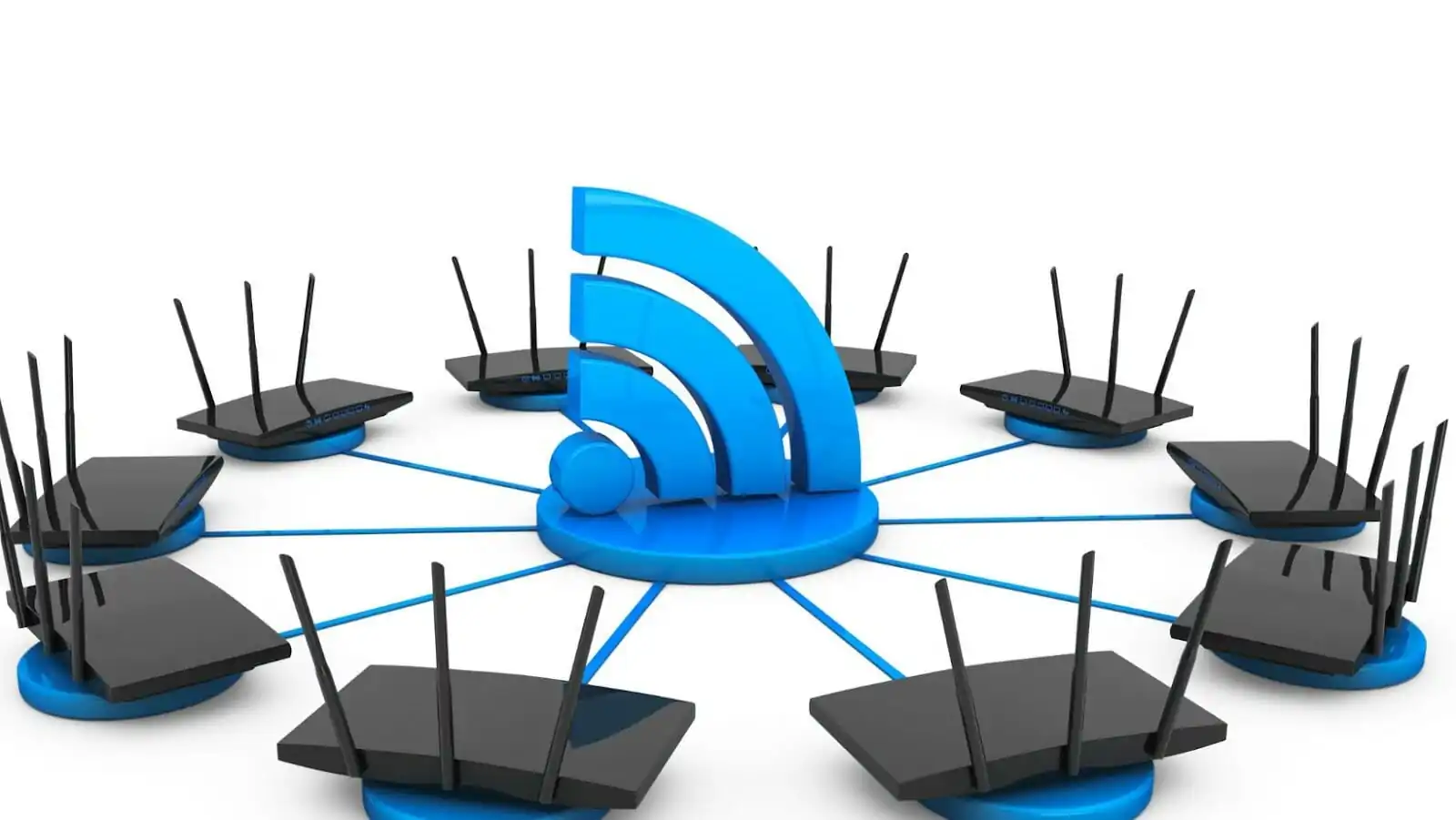When your WiFi network is not working as it should, restarting it may be the solution. Restarting with 10.0.0.1 Piso WiFi pause time can help you reset your network like a pro.
Here’s how to do it:
| Step | Instructions |
| 1 | Open your web browser and type 10.0.0.1 in the address bar. |
| 2 | Enter your login credentials to access the router settings. |
| 3 | Look for the option to pause the WiFi network and click on it. |
| 4 | Wait for a few seconds, then click on the option to resume the network. |
This process will restart your WiFi network and potentially fix any issues you were experiencing.
Pro tip: It’s a good idea to restart your WiFi network regularly to ensure it’s functioning at its best.
10.0.0.1 Piso Wifi Pause Time
WiFi networks can suffer from a variety of issues, such as slow speeds, unstable connections, and even total outages. If you’re having trouble with your WiFi network, there are a few basic steps you can take to try and improve your connection.
In this article, we’ll look at 10.0.0.1 PISO WiFi Pause Time, a simple yet powerful way to restart your WiFi network and get it working again. Read on to learn more about this noble procedure!
Check your primary Wifi connection
Checking your primary WiFi connection should be the first step when troubleshooting issues with your wireless network. Here are the steps to follow:
| 1. Ensure that your WiFi router is turned on and properly connected to a working power outlet. |
| 2. Check if the Ethernet cable connected to your WiFi router is plugged in correctly and not damaged. |
| 3. Confirm that your Internet Service Provider (ISP) is not experiencing any outages or maintenance work in your area. |
| 4. Try restarting your router by unplugging it from the power source for 10 seconds, then plugging it back in. |
| 5. Verify that your device is connected to the correct WiFi network and that you are within the signal range. |
If the issue persists after trying these steps, contact your ISP for further assistance.
Disconnect your router and modem
If you’re experiencing issues with your WiFi network, disconnecting your router and modem is a basic troubleshooting step that can help resolve many common problems. Here’s how to do it:
| Power off your router | Power off your modem (if separate from your router) |
| Unplug it from the electrical outlet | Unplug it from the electrical outlet |
| (if your router has one) press the power button |
Wait for 30 seconds.
| Power on your modem | Power on your router |
| Plug it back into the electrical outlet and wait for it to fully reboot (this can take a few minutes) | Plug it back into the electrical outlet or press the power button |
Wait for your router to fully reboot, which can take several minutes.
This process will help refresh your network connection and clear any temporary glitches. Pro tip: If you have a Piso WiFi, you can easily pause time using 10.0.0.1 to give your network some rest time.

Reboot your router and modem
Rebooting your router and modem can solve many common issues related to your WiFi network. To restart your WiFi network like a pro, follow these basic troubleshooting steps:
| 1. Turn off your modem and router by pressing the power button or unplugging them from the outlet. |
| 2. Wait for 30 seconds before turning them back on. This will allow time for the internal settings to reset and fix any issues. |
| 3. If your WiFi router has a reset button, press and hold it for 10-15 seconds to perform a hard reset. This will erase all previously saved settings and restore the router to its default factory settings. |
| 4. Use the 10.0.0.1 Piso WiFi pause time feature to limit WiFi access for a set period, allowing you to troubleshoot any network issues without interruption. |
By following these simple steps, you can quickly and easily fix most common WiFi network problems and enjoy a fast and reliable internet connection.
Advanced Troubleshooting
Restarting your wifi network can be a great way to troubleshoot any problems you are having. Many routers use the 10.0.0.1 IP address as a gateway. Additionally, the Piso WiFi Pause Time feature can help you manage your wireless network.
In this article, we will discuss advanced troubleshooting tips for restarting your wifi network using 10.0.0.1 and Piso WiFi Pause Time. Let’s take a deeper look at how this can help you get back to surfing the web again.
Accessing Piso WiFi configuration panel using 10.0.0.1
When troubleshooting your Piso WiFi network, accessing the 10.0.0.1 configuration panel can help you restart your WiFi like a pro by utilizing the Piso WiFi Pause Time feature.
Here’s how to access the configuration panel and use the Pause Time function:
| Step | Action |
| 1 | Connect your device to the Piso WiFi network. |
| 2 | Open your web browser and type “10.0.0.1” in the URL bar. |
| 3 | Log in to the configuration panel using the default username and password (usually “admin” for both). |
| 4 | In the configuration panel, navigate to the Pause Time function and select the desired restart time (e.g., 1 hour, 4 hours, 8 hours, etc.). |
| 5 | Click the “Save” button to activate the Pause Time feature and restart your Piso WiFi network. |
By accessing the 10.0.0.1 configuration panel and using the Pause Time feature, you can easily troubleshoot and restart your Piso WiFi network like a pro.
Pro tip: It’s always a good idea to change the default username and password of your Piso WiFi network to ensure security.

Changing Pause Time settings to improve WiFi performance
Adjusting the Pause Time settings in your WiFi network can improve its performance and help you troubleshoot network issues. By adjusting the Pause Time setting to an optimal value, you can manage how long each device on your network is allowed to access the internet. This can help reduce network congestion and boost overall network performance.
To adjust the Pause Time setting, follow these steps:
| Step | Instructions |
| 1 | Access your WiFi’s advanced settings by typing “10.0.0.1” in your browser’s address bar. |
| 2 | Enter your username and password to log in to the router’s settings page. |
| 3 | Look for the Pause Time setting, which may be under a “Bandwidth Control” or “QoS” section. |
| 4 | Adjust the Pause Time setting to an appropriate value, such as 500 milliseconds, based on the number of devices on your network and your usual network usage. |
By adjusting this setting, you can have more control over your network’s performance and make sure you get the most out of your internet connection.
Customizing Piso WiFi network settings for better performance
Customizing Piso WiFi network settings can significantly improve the performance of your WiFi network, ensuring faster connection speeds and a smoother browsing experience for your customers. By accessing the Pause Time feature of your Piso WiFi network through 10.0.0.1, you can reboot your network without physically unplugging it. Here are the steps to follow:
| On your device, connect to the Piso Wifi network. |
| Open your web browser and type 10.0.0.1 into the address bar. |
| Log in using the default username and password. |
| Locate the Pause Time feature and set the timer to your preferred duration. |
| Click on the “Apply” button to save the changes. |
| The Pause Time feature will reboot your network at the set interval, allowing it to clear its cache and refresh its internal settings, thereby improving its performance. |
Common Problems and Solutions for WiFi Networks
WiFi networks are one of the most important tools in modern society to stay connected with family, friends, and work. Unfortunately, they can also be one of the most troublesome to deal with. From slow speeds to missing signals, there are a variety of issues that can arise.
In this article, we’ll go over some common problems and solutions when dealing with WiFi networks, such as using the 10.0.0.1 Piso WiFi Pause Time to restart your WiFi like a pro.
Slow internet speed
Slow internet speed can be frustrating, especially when you are trying to stream or download something important. Here are some common problems and solutions for WiFi networks:
| 1. Distance from the router: The farther away you are from the router, the weaker the signal will be, resulting in slower internet speed. Solution: Move closer to the router or invest in a range extender. |
| 2. Interference from other devices: Other electronics and devices can interfere with your WiFi signal, causing a slower connection. Solution: Move your router away from other electronics, or use a different channel in your router settings to avoid interference. |
| 3. Outdated equipment: Old routers or modems may not be able to handle today’s high-speed internet. Solution: Upgrade your equipment to a newer and more powerful model. |
Additionally, you can try restarting your WiFi network to see if that helps. Using the 10.0.0.1 Piso WiFi Pause Time code can be an effective way to do this like a pro. Simply enter the code into your browser, and you will be prompted to restart your network. This can often resolve internet speed issues quickly and easily.

Frequent WiFi disconnects
Frequent WiFi disconnects can be very frustrating, but fortunately, there are many common problems and solutions for WiFi networks that can help resolve this issue.
Here are some common problems and solutions for frequent WiFi disconnects:
| Problem | Solution |
| Overloading of the network | Too many devices connected to a single network can cause frequent WiFi disconnects. Disconnect devices that are not in use or upgrade your internet plan to ensure adequate bandwidth. |
| Interference | Other wireless devices or networks can interfere with your WiFi signal causing frequent disconnects. Relocate your router or switch to a less crowded channel. |
| Router issues | Outdated firmware or hardware issues can cause frequent disconnects. Update your router to the latest software and consider upgrading your router if it’s old or outdated. |
One useful pro tip is to restart your WiFi like a pro using 10.0.0.1 Piso WiFi pause time to help alleviate frequent disconnects. Using Piso WiFi pause time can help modify your WiFi network and reduce interruptions.
Connection timeout errors
Connection timeout errors are a common issue faced by WiFi network users. These errors occur when the server doesn’t receive a response from your device within a specified time frame. This can be caused by several factors, such as network congestion, poor signal strength, or server overload. To solve this issue, try the following troubleshooting methods:
| 1. Power cycle your WiFi router and modem by unplugging them for 30 seconds and plugging them back in. |
| 2. Check your network signal strength and move closer to the router if necessary. |
| 3. Restart your device and try connecting to the network again. |
| 4. Check for any software updates for your router or modem and install them if available. |
Pro tip: If you’re using a Piso WiFi network, you can use the 10.0.0.1 Piso WiFi pause time option to restart your network remotely and avoid connection timeout errors. Simply log in to your Piso WiFi account, select the pause time option, and restart your network seamlessly.
Benefits of Restarting Your WiFi Network
Restarting your WiFi network is a simple way to keep your internet connection running smoothly. By restarting your router, you can enjoy faster speeds and better performance. In addition, restarting your router can help to ensure the security of your network by resetting the firewall and preventing outside threats from accessing your router.
Let’s explore the other benefits of restarting your WiFi network.
Improved WiFi network performance and stability
Restarting your WiFi network can significantly improve its performance and stability, especially if you’re experiencing slow speeds, dropped connections, or other connectivity issues.
Here are the benefits of restarting your WiFi network:
| 1. Clears the cache and resets settings: | Restarting your WiFi network clears cache files, resets settings, and addresses the glitches that may lead to slow speeds or dropped connections. |
| 2. Refreshes the connection with service provider: | Restarting your WiFi network establishes a fresh connection with your service provider or modem, which may improve the speed and stability of your network. |
| 3. Resolves IP address conflicts: | Restarting your WiFi network allows your device to renew its IP address, thus resolving any conflicts that may arise due to multiple devices sharing the same IP. |
Pro-tip: To restart your WiFi like a pro, type in 10.0.0.1 (or the IP address provided by your internet service provider) in your browser and look for “Piso WiFi Pause Time” to temporarily disable your network and reboot it.
Good signal strength and high data speeds
Restarting your WiFi network might seem like a minor inconvenience, but it can lead to a significant improvement in signal strength and data speeds, thereby enhancing your internet experience.
Here are some benefits of restarting your WiFi network:
| 1. Resolves connectivity issues: | Often, restarting your router can resolve connectivity issues and fix problems caused by conflicting IP addresses or firmware bugs. |
| 2. Enhances speed and performance: | Restarting your router can clear the cache and reduce network lag, leading to faster internet speeds and smoother online experiences. |
| 3. Eliminates security threats: | Restarting your router can protect your network from security threats like malware or viruses, ensuring a safe browsing experience. |
| 4. Easy solution: | Restarting your router is an easy and cost-effective solution to fix most internet problems, saving your time and money. |
Pro tip: To restart your WiFi network like a pro, use 10.0.0.1 Piso WiFi Pause Time to access your router’s settings and perform a soft or hard reset.
Improved user experience for all devices
Restarting your WiFi network not only improves the network’s speed and performance but also enhances the user experience for all devices connected to it. Here are some benefits of restarting your WiFi network:
| 1. Fixes connectivity issues: | Restarting your WiFi network can fix internet connectivity problems that occur due to router overload or network congestion. |
| 2. Better speed and performance: | When the WiFi network is restarted, it clears all temporary data and caches, thus improving its speed and performance. |
| 3. Updates security protocols: | Many network security protocols are updated during the restart, making the network more secure and free from online threats. |
| 4. Improves range and stability: | Restarting your WiFi network can also improve the range and stability of the network, making it easier to connect from farther distances and reducing network dropouts during usage. |
So, the next time you face issues with your WiFi network, be sure to restart it like a pro using 10.0.0.1 Piso WiFi Pause Time to improve the performance and user experience of all connected devices.
Conclusion: Why Restarting your WiFi Network is Crucial for Better Connectivity
Restarting your WiFi network is crucial for ensuring better connectivity and preventing connection issues.
Over time, your WiFi network may accumulate errors, bugs, and network congestion that can slow down your internet speed, disrupt your connection, or even crash your router.
Restarting your WiFi network helps to refresh your connection, eliminate any congestion or interference, and free up your router’s resources.
To restart your WiFi network like a pro, consider using 10.0.0.1 Piso WiFi Pause Time. This tool allows you to pause your WiFi network for a few seconds, which can help to reset your connection and improve your speed.
Pro tip: Restart your WiFi network at least once a week to keep it running smoothly and avoid connectivity issues.

